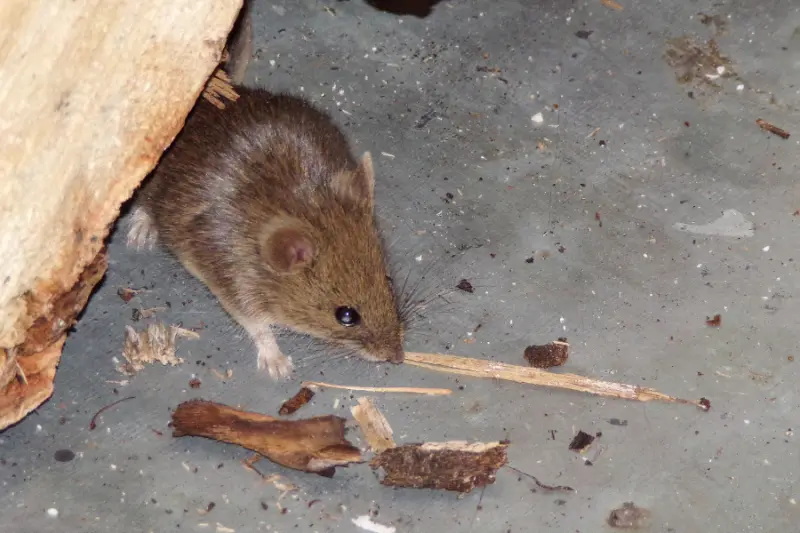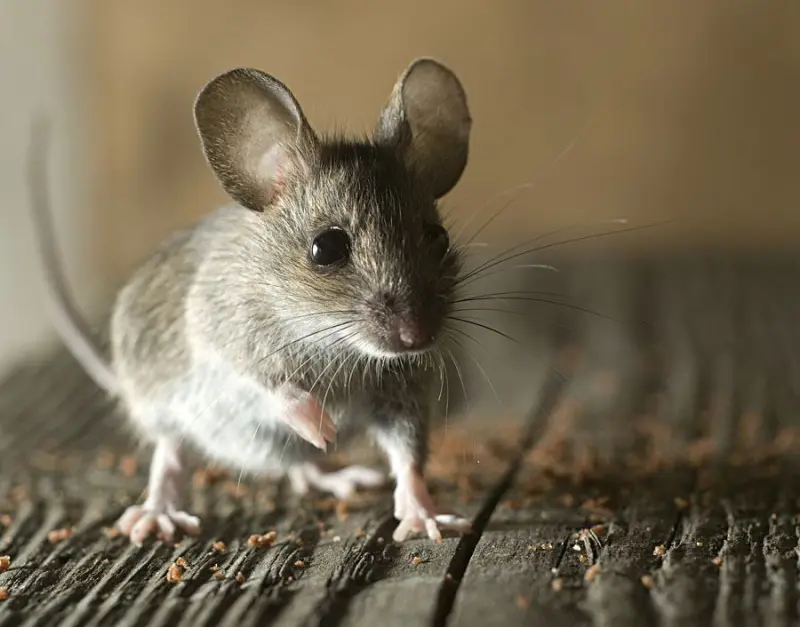Do you want to find out more about how to control rodents in your house? This article describes how to tell there are rodents in your house and how to get rid of rats and mice.
Getting Rid Of Mice And Rats In The House
There is nothing more disconcerting than realising you have mice and rats in your home, especially as you learn the health risks involved. Understanding rodent control and how to prevent mice from entering your home in the future can stop this from happening again.
Mice naturally are attracted to our homes. They seek shelter in hidden areas, using the smallest of entry points to establish a new home in our properties. Our homes offer warmth and protection from the weather and elements. Leftover food sources and unsealed food allow constant feeding, and water from pipes can provide rodents with moisture.
The number of rodents in your can increase over the cold and winter months, as rats and mice don't like the cold, so will enter our homes for warmth. They will find nesting materials and make their home in one particular location but can move about the entire house. Most mouse and rat species will typically make nests near a food source, whether that's the kitchen or a rubbish bin.
While it can be difficult to spot rodents in the house at times, there are some signs that you can look out for.
How to tell there are rodents in your house
While you can sometimes hear scratching from rodents in the walls and loft space, you will more commonly find signs before spotting the mouse or rat itself.
The best way to find and deal with the mice infestation before it gets worse is to stay calm and make a plan.
Here are the most common signs that you should be looking out for if you suspect there is a rat or mouse infestation in your house:

Droppings
Mouse droppings are incredibly recognisable and are a sign that mice are moving around your property.
They will typically appear overnight in numbers ranging from 50-80 and can be recognised from their length and colour.
Mouse droppings are (on average) 3-8mm in length and will be small and dark.
Rat droppings will appear similar but be larger (about half an inch in length) and dark brown in a spindle shape.
Gnaw Marks
Rodents need to gnaw and chew on things to keep their front teeth in check. The rodent family is plagued by their front teeth growing continuously, which, if left alone, would eventually block the mouth and prevent food from being eaten, leading to death.
Due to this, you will be able to find marks and signs that rodents are chewing within your home. Rat marks will appear larger due to the increased size of their jaw and strength, but you should be looking at all materials. Wood, plastic, copper, aluminium and even brick can be gnawed on by rodents, leaving marks and debris in their wake.
Grease Marks
You can expect grease marks to be caused by both mice and rats as they move around your home.
These are caused by their bodies brushing against various surfaces on your walls, skirting and floors.
They will appear as dark grease marks on corners, and around holes they hide in, giving you the idea that something is moving around.
Strong Odour
Recognising the smell of mice and rat urine can save you a lot of time looking, as the scent is very similar to ammonia.
Rodents frequently urinate, which can create a urine pillar or small mounds when combined with dirt and body grease.
These can be up to 4cm high and 1cm wide, creating a foul smell throughout the entire house.
We also recommend conducting a home inspection, especially around the home's exterior.
You should look for a small hole that can act as a point of entry and perhaps continue this inspection into the attic as there could be adjoining holes between houses. These holes may need a seal to prevent access, especially into areas like a roof or basement.
How Do I Get Rid of Mice in My House?
Now you know some signs to look out for when you believe there to be mice or rats in your home; you should understand how to best get rid of them. Understandably, you want to act fast, as they can destroy electrical equipment and wires, carry deadly viruses and bacteria that are harmful to humans and create a horrible atmosphere in your home.
You must act as soon as you notice any of the above signs. Here are our tips to getting rid of house mice as a first approach:
Locate Entry Points
Finding where the mice and rats are entering your property is the best thing you can start with, along with locating their hole into your kitchen or other rooms. You need to establish their pattern and nest location before setting any traps or bait. Some common places for an entry point are:
Inside kitchen cabinets
Under and behind fridges and ovens
In cupboards or under stairs-Around doors
Near the fireplace-Around any pipework
Mice are small animals and don't need large gaps to enter your home.
Setting Mouse Traps
Once you have established their entry point and location in your home, you can begin setting traps in that area. This is the most common and effective way of getting rid of mice, but you may need an exterminator or pest control specialist for larger infestations. Around the mouse hole, surrounding any bins, and along walls are good places to position mouse traps.
Depending on your approach and house size, you have different types of mouse traps to choose from:
Snap Traps are the expected mouse trap variety to use, as they work on a trigger system and can kill a mouse quickly. If you are experiencing several mice in your home, snap traps are one of the most effective ways to eliminate an infestation.
Electric Traps work efficiently also to eliminate mice by luring them into the chamber before fatal electrocution. Electric traps have been designed to prevent any humans or pets from being harmed, so they are safe to use in your home.
Sticky Traps can be used if you prefer a more humane trap approach. These work by trapping the mice on an adhesive glue board, giving you the ability to free them or kill them. However, they can only be used once, so they aren't ideal for larger infestations.
Live Catch Traps work completely humanely, keeping the mouse stuck and not killing it. Similar to catch traps used for larger mammals, they work with a trigger-activated door that remains shut until the rodent is released.
Live traps can get rid of rats and mice from your home, but there is the potential for them to return and can only typically catch one mouse at a time. Most people prefer a humane approach, but they can be more time-consuming.
Clear Out Rubbish
To prevent future mice infestations and pests in your home, you should clear out all rubbish as this will attract more pest variations.
All bin bags, food waste, electrical wires, and other appealing items to a rodent should be cleared before mice can chew, gnaw and set up a nest in your home. If food waste is spread around your property, you can attract rodents in more numbers.
Changing the way you view your home will also help, as you should not leave food on the ground, including pet food, overnight. If you believe that something could be a potential food source for a mouse or rat, you should store it in sealed containers away from their reach.

Calling A Pest Control Expert
If all of these steps don't lead to mice being removed from your property, you should call an exterminator or pest control expert. They are qualified and licensed to deal with all variations of pests and can eliminate greater numbers of mice from your home.
The chemicals and treatments they use are stronger and more efficient than over the counter products, and their knowledge can help prevent future infestations and deter mice.
The mice being in your home in the first place is a fault of yours or the state of your home, as they will enter all properties.
Are mice and rats dangerous?
Despite being unappealing and sometimes scary, rodents do also pose a serious threat and health risk to humans. They carry many diseases ranging from salmonella and E.Coli, spreading them as they pass throughout our homes.
They can contaminate food as they pass through the kitchen, leading to food poisoning. Also, where there are mice, other animals and pests will follow. They carry lice, fleas and ticks in their fur and birds and insects will be attracted where droppings and odours occur.
The risks of mice and rats are more than just to your health, as they can also damage electrical appliances and wires. House fires have been caused by mice chewing through live wires and electrocuting themselves, along with plumbing problems and severe structural issues.
These are, of course, worst-case scenarios but are still possible when mice chew through car wiring, electrical wires, drywall insulation and more. For this reason, keep anything they could chew on in containers. This goes for plastic, metal and wood, so you should store firewood in a safe location.
If you continue to suffer from rodent infestations, please reach out to our team today. We have a team of experienced pest control specialists and can use poisons to eliminate any size of mice infestation.
Pest Control Hampshire are pest control specialists working throughout Portsmouth, Southampton, Basingstoke And Hampshire. Contact us for pest control Portsmouth.
Follow the links below to find a pest control specialist to help resolve your pest infestation.

